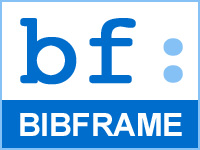Throughout your professional library reading, you will occasionally come across esoteric library technology acronyms. It’s annoying to have to stop reading to look up their meanings. To help prevent that, we present our list of more common library technology acronyms.
These acronyms have been added to the Library Technology Acronyms page.
AAP – Authorized Access Point, text string that names the item for a BIBFRAME Authority (bf:authorizedAccessPoint).
API – Application Program Interface, “a set of routines, protocols, and tools for building applications and providing a way to interact with online services”.
 BIBFRAME – Bibliographic Framework, a new model for bibliographic description to replace MARC.
BIBFRAME – Bibliographic Framework, a new model for bibliographic description to replace MARC.
DOAJ – The Directory of Open Access Journals.
FAST – Faceted Application of Subject Terminology, a “faceted subject heading schema” by OCLC with the LOC, used as an authority file.
FOAF – Friend of a Friend, describes people and their relationships using an RDF schema.
HILCC – Hierarchical Interface to Library of Congress Classification, structured menu for LC Classification subject access on the Web.
JSON – JavaScript Object Notation, “a lightweight data-interchange format” and standard.
LCNAF – Library of Congress Name Authority File, “provides authoritative data for names of persons, organizations, events, places, and titles”.
LOD – Linked Open Data, Linked Data which is published under an open-access license.
LSP – Library Services Platform, a term for a suite of library applications which might include an ILS, ERM, and discovery service.
MADS/RDF – Metadata Authority Description Schema in Resource Description Framework, a data model for authority records.
MFHD – Multi-Format Holdings Data, a holdings record containing location and call number (sometimes pronounced “muffhead”).
OWL – Web Ontology Language, “a Semantic Web language designed to represent rich and complex knowledge about things, groups of things, and relations between things”.
RDF – Resource Description Framework, a W3C standard for describing Web data.
REST – Representational State Transfer, the software architectural style of the Web.
SPARQL – SPARQL Protocol and RDF Query Language, used to retrieve Web data in RDF format.
URI – Uniform Resource Identifier, string of characters that points to a resource (with a URL being the most popular type).
 W3C – World Wide Web Consortium, “an international community that develops open standards to ensure the long-term growth of the Web”.
W3C – World Wide Web Consortium, “an international community that develops open standards to ensure the long-term growth of the Web”.
WEMI – Work, Expression, Manifestation, Item; Group 1 entities and the foundation of the Functional Requirements for Bibliographic Records (FRBR) model.

